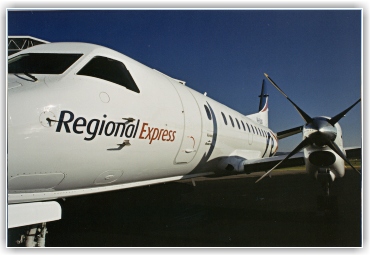 Building air travel in regional Australia
Building air travel in regional Australia
Having successfully spearheaded the rescue of Skywest Airlines from the Administrators of Ansett Airlines, Bill Meeke was engaged by a Sydney-based consultancy to address several problems that were impacting seriously on another newly formed regional airline following the collapse of Ansett and the events of 11th September 2001.
-
- Traffic levels on regional routes were down by more than 30% on past levels;
- Overall seat load factors were down to about 55% for the new airline;
- On most routes traffic was continuing to decline and on others the recovery from 2001-02 levels had not been achieved;
- Some routes were facing imminent closure unless traffic could be quickly restored to viable levels;
- The financial impact on the airline was serious and could not be sustained
We undertook to renegotiate all airport charges (predominantly weight-based landing charges and passenger head taxes) as either:
a. Savings that could be enjoyed by the airline to improve overall profitability and the economic sustainability of the air service, or
b. Savings that could be passed on to passengers in the form of lower air fares in order to stimulate increased demand for air travel.
There were twenty-four regional airports in the network across four states of Australia, namely New South Wales, Victoria, Tasmania and South Australia.
Our research revealed that the major inhibitor to the recovery of air travel was price sensitivity. Whilst taxes and charges had been growing insidiously for some years, the plethora of new taxes, levies and charges introduced after September 2001 was acting as a serious disincentive for people to return to regional air travel.
Using experience gained in Western Australia regarding price sensitivity and demand elasticity on regional air routes, we devised a model to evaluate the impact of price on demand for each of the destinations we examined.
We negotiated and brokered agreements with eighteen of the twenty-four airports in which they agreed either to a significant reduction in head taxes or a complete moratorium until traffic levels could be restored.
The head tax savings were passed-on directly to passengers and the airline’s contribution was to introduce a very low entry-level fare substantially below any previous fare seen on the route. In other circumstances the airport owner and the airline operator forged collaborative arrangements to sustain the viability of the air service in the near-term allowing the market more time to rebuild and achieve sustained growth over the long term.
The resultant growth in passengers for the participating ports was almost three-fold that of the non-participating ports but the most pleasing aspect of the project from the airline’s point of view was the substantial revenue growth associated with the increased demand and its major contribution to profitability.
Each of the regional communities benefited from the sizeable boost to the local economies and the restored viability of their air service, but importantly the airport owners increased and broadened their tax base which reversed the need to increase per-capita head taxes.
